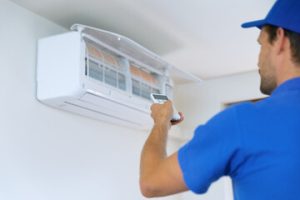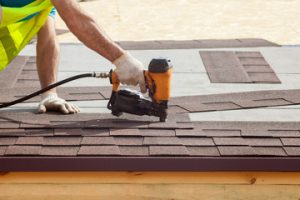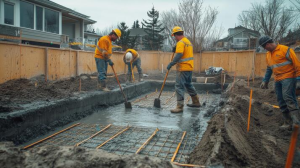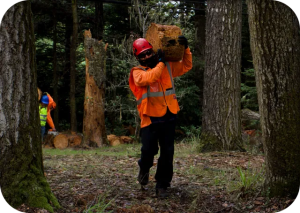Forestry Mulching Services Near Me process trees, brush, and undergrowth and turn them into mulch right on the spot. It’s a more efficient way to clear land and promote healthy tree and plant growth.
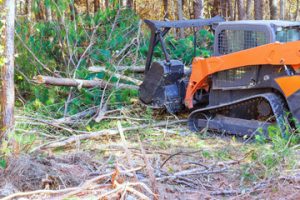
Forestry mulching is becoming increasingly popular in commercial and residential land clearing, as well as a tool for wildfire prevention. The forestry mulching process is efficient, economical and environmentally friendly.
Forestry mulching is a revolutionary land-clearing technique that uses specialized machinery to grind and shred unwanted vegetation, brush and trees into nutrient-rich mulch. This is a much more time-efficient option than traditional clearing methods such as bulldozing or burning. It also eliminates the need for hauling away debris, which can add weeks or even months to a project timeline.
This method is becoming increasingly popular among private property owners, government agencies, utility companies and other commercial entities in need of removing large amounts of overgrowth for construction or development projects. It is an environmentally friendly alternative to tree felling and is often used by pheasant hunters, wildlife conservation organizations and other riparian conservation groups. By leaving the organic mulch layer on site, this technique protects soil and reduces erosion and weed growth.
It also promotes biodiversity, and helps control invasive species that threaten native habitats. In addition, the resulting mulch is an ideal environment for wild animals and plants to thrive and is a cost-effective way to maintain a healthy ecosystem.
Because of its efficiency and versatility, forestry mulching is a great choice for a wide range of applications, including site preparation, forest fire mitigation, wildlife habitat restoration, agricultural use and more. It can be performed year-round, and can be completed on small residential lots or expansive commercial properties. The forestry mulching process is also relatively inexpensive, as it eliminates the need for site prep, cutting and hauling away debris.
In addition, the forestry mulching process can help enhance the value of your property. It makes your property look neat and well-maintained, and the organic material left behind acts as a natural insulation layer, reducing the risk of fire hazards. It also attracts eco-conscious buyers, making your property more appealing to prospective residents or tenants. Moreover, proper maintenance of the mulched area can help prevent regrowth and ensure long-term benefits. In order to sustain the positive effects of forestry mulching, it is important to monitor your property regularly and implement additional mulching or spot treatments if necessary. In addition, regular monitoring of the mulch layer will help maintain soil health, suppress weeds, and prevent erosion.
Environmentally Friendly
Forestry mulching services are becoming more popular because of their eco-friendly nature. Unlike traditional land clearing methods, which often strip away soil, forestry mulching leaves a layer of rich, organic material that protects the soil and provides habitat for small animals. This method of clearing land also helps reduce erosion, improves soil health, and promotes vegetation growth. It’s ideal for homeowners, businesses, and municipalities that want to strike a balance between land development and environmental preservation.
The forestry mulching process uses a machine equipped with a powerful mulching head to grind down trees, brush, and grasses and turn them into natural mulch. This eliminates the need for hauling, burning, or pushing debris into unsightly piles. This type of land clearing is typically used to clear overgrown areas, create firebreaks, and clear land for agriculture or development projects. It can even be used to manage invasive species and restore wildlife habitats.
Forestry mulching is a cost-effective alternative to other land clearing methods. For example, it’s less expensive than bulldozing or burning because it requires fewer labor hours and is more efficient. Plus, it doesn’t produce any toxic fumes and does not pollute the environment. This method of land clearing also saves money on fuel and equipment. Moreover, it’s safer than traditional land clearing methods because it is quieter and produces less dust.
When hiring a professional forestry mulching company, be sure to ask about the equipment and machinery they use. Look for a company that offers high-quality machines with a proven track record. Ideally, they should offer a variety of sizes and types of equipment that can be used for different projects. They should also have a flexible schedule to accommodate seasonal needs and vegetation growth.
Before starting your project, make sure to prepare the area by removing any movable objects and marking any sensitive areas. This will ensure that the forestry mulching process runs smoothly. It’s also a good idea to consult with the landowner before beginning your work. The property owner will be able to tell you about any foreseeable issues and recommend solutions. They will also be able to recommend the right machinery and attachments for your specific project.
Cost-Effective
Forestry mulching is a cost-effective solution for land clearing and brush removal. Unlike traditional land clearing methods, which can be expensive and time-consuming, forestry mulching uses a specialized machine attachment to grind unwanted vegetation into a natural layer of organic material that protects and enriches the soil. The process is also quick and efficient, allowing you to get back to using your property much faster.
Another benefit of forestry mulching is that it is customizable, and the team will work with you to ensure your project meets your needs and budget. For example, the team can clear only invasive species and unwanted plants while leaving healthy trees intact, or they can remove all of the vegetation to create a cleared space for development. The team will even discuss the best times of year to mulch your land based on the climate, as this can help prevent unwanted regrowth and promote fast recovery.
With forestry mulching, you’ll save money on the costs of equipment rental, labor, fuel, and disposal. Additionally, forestry mulching is more eco-friendly than other land clearing techniques, such as burning or mechanical removal, which often release harmful pollutants into the air and lead to soil compaction and erosion.
When used correctly, forestry mulching can enhance wildlife habitats, control wildfire, reduce erosion, and more. Additionally, the process can be used to manage invasive species and reduce tick populations.
One of the most important things to consider when choosing a forestry mulching company is their experience and commitment to customer satisfaction. The right company will have the necessary equipment and knowledge to handle your land clearing project safely and effectively. They’ll be able to assess your site and select the right machinery for the job, ensuring that it is completed on schedule and within your budget.
Contact Bigfoot Forestry today to learn more about how forestry mulching services can benefit your property. We offer a wide range of affordable forestry mulching and brush clearing services for residential, commercial, and agricultural properties. We pride ourselves on our unwavering commitment to customer satisfaction, open communication, and professional expertise. We use the latest in forestry mulching technology and provide a free, no-obligation estimate to all of our clients.
Customized
Forestry mulching services can help homeowners and businesses maintain their properties. The process involves a mulching machine that grinds unwanted vegetation into a layer of organic material that improves soil health and promotes plant growth. It is an alternative to traditional land clearing, which requires removing trees and brush. The mulching machine also eliminates the need for burning or hauling away debris, which reduces air pollution and waste. The resulting mulch can be spread around the property for use as a natural fertilizer, reducing erosion and weeds. It can also be used to protect against wildfires and enhance wildlife habitats.
The cost of forestry mulching can vary depending on the size and complexity of the project. Larger projects typically require more labor and equipment than smaller ones. A professional forestry mulching company can provide a customized service that is based on the client’s requirements and budget.
Many forestry mulching companies offer a variety of services, including stump grinding, invasive species removal, and fine mulching. These services can be an effective solution for property owners who need to clear their land for development or renovation. The company can also handle other maintenance tasks, such as site grading and erosion control.
When selecting a forestry mulching company, make sure the company has the right equipment and experience. If the equipment is not in good condition, it can damage your property and cost you more money in repairs. It is also important to choose a company that has a reputation for customer service. They should respond quickly to inquiries and provide prompt, professional service.
A forestry mulching service can help you reclaim your overgrown property and turn it into an attractive, functional area. It is a time-saving and environmentally friendly alternative to traditional clearing methods, and it can be done for a fraction of the cost of land clearing.
To be successful in the forestry mulching business, you need to understand your operating expenses and develop appropriate pricing strategies. For example, you should consider the amount of fuel that is consumed by each piece of machinery and factor in any additional expenses, such as permit fees or surveying costs. You should also consider how much work can be completed on a single day, and consider grouping similar projects together to minimize travel times and increase efficiency.

